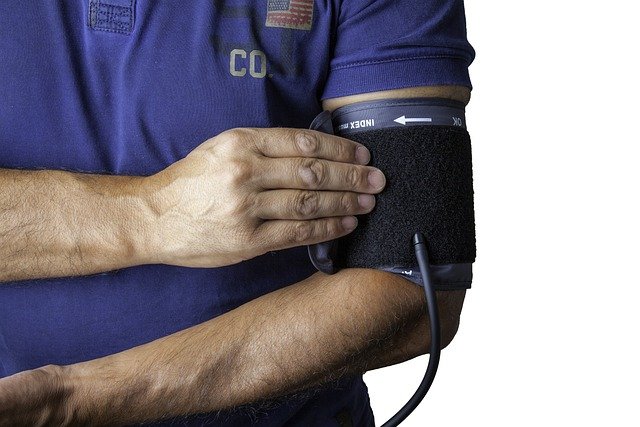Cardiac Issues: Causes, Symptoms, and Care
Heart problems cover a wide range of conditions that affect how the heart functions, from rhythm disturbances to blockages in coronary arteries and structural valve defects. Many people will encounter some form of cardiac issue during their lifetime, and understanding common causes, typical symptoms, and available care options helps with timely recognition and safer management. Awareness of risk factors such as high blood pressure, high cholesterol, diabetes, smoking, sedentary lifestyle, and family history can guide conversations with healthcare providers and influence prevention strategies. Early evaluation often involves basic medical tests and, when necessary, referral to cardiology or a hospital emergency department. Rehabilitation, ongoing monitoring, and coordinated care across primary care and specialty services can reduce complications and improve quality of life for people living with chronic cardiac conditions. This overview summarizes typical causes, when to seek urgent hospital care, how cardiology evaluates heart disease, the broader role of healthcare in managing chronic cardiac issues, and common medical tests and treatments used in practice.

This article is for informational purposes only and should not be considered medical advice. Please consult a qualified healthcare professional for personalized guidance and treatment.
What causes heart problems?
Cardiac issues arise from diverse causes. Coronary artery disease, where plaque narrows arteries supplying the heart, is a frequent cause of chest pain and heart attack. Hypertension (high blood pressure) stresses the heart over time and contributes to heart failure and valve problems. Arrhythmias are caused by electrical disturbances and can result from heart tissue damage, medication effects, or electrolyte imbalances. Congenital heart defects, infections (like myocarditis), and metabolic disorders also play roles. Lifestyle factors—tobacco use, poor diet, excessive alcohol, inactivity—and conditions such as diabetes and high cholesterol increase risk. Family history and age are non-modifiable contributors that clinicians consider during assessment.
When should you go to a hospital for chest symptoms?
Certain symptoms warrant urgent evaluation at a hospital emergency department. Seek immediate care for sustained chest pain or pressure, sudden shortness of breath, fainting or near-fainting, dizziness with chest or arm discomfort, or sudden weakness or facial droop that could indicate stroke-related cardiac causes. Rapid, irregular, or very fast heartbeats accompanied by lightheadedness or collapse also need urgent attention. If symptoms are severe, sudden, or rapidly worsening, emergency services provide faster access to cardiac monitoring, medical imaging, and interventions that can be lifesaving.
How does cardiology diagnose conditions?
Cardiology diagnostic pathways begin with history and physical examination and typically include an electrocardiogram (ECG) to record electrical activity. Imaging tests such as echocardiography visualize heart structure and function. Stress testing evaluates symptoms during exertion, and ambulatory monitors (Holter or event recorders) capture intermittent arrhythmias. Blood tests, including cardiac biomarkers, assess heart muscle injury or inflammation. Advanced evaluation may involve coronary angiography, CT or MRI of the heart, and electrophysiology studies for complex rhythm disorders. Cardiologists interpret these results to define disease severity and guide treatment planning.
How does healthcare manage chronic cardiac issues?
Healthcare for chronic cardiac conditions is multidisciplinary. Primary care clinicians manage risk factors and coordinate care, while cardiology specialists handle procedures and complex medication regimens. Nursing, pharmacy, dietitians, and physical therapists contribute to medication adherence, dietary changes, and cardiac rehabilitation programs offered through local services or hospitals. Ongoing follow-up includes monitoring for medication side effects, repeat testing to track disease progression, and tailored lifestyle counseling. Social and psychological support are often part of care plans because adherence and recovery are influenced by socioeconomic factors and mental health.
What medical tests and treatments are common?
Medical management often combines lifestyle modification with medications—antiplatelet agents, blood pressure medicines (beta-blockers, ACE inhibitors or ARBs), cholesterol-lowering drugs, and treatments for rhythm control as needed—selected based on diagnosis and individual risk. Interventional procedures include percutaneous coronary intervention (stenting) and cardiac catheterization for blocked arteries. Surgical options such as coronary artery bypass grafting or valve repair/replacement are used when indicated. Device therapies include pacemakers for bradycardia and implantable cardioverter-defibrillators (ICDs) for life-threatening arrhythmias. Rehabilitation and long-term monitoring are common parts of recovery plans.
Conclusion
Cardiac issues span a spectrum from transient rhythm disturbances to chronic structural disease requiring long-term management. Early recognition of symptoms, assessment of risk factors, and coordinated care involving primary care, cardiology, and allied health professionals improve outcomes. Diagnostic tests and treatment options are tailored to each person’s condition and circumstances, and prevention through risk-factor control remains central to reducing the burden of heart disease.






